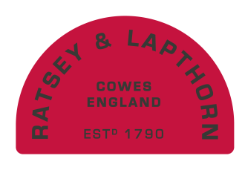our history
Ratsey and Lapthorn have been making Sails for over 225 years. We are experts in sailmaking and our team consists of keen racers and medal winners on both classic and modern yachts.
The Rolls Royce of sail making
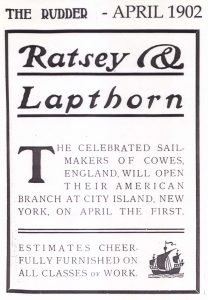
Ratsey & Lapthorn were, and remain, the Rolls Royce of sail making. Their history providing a multitude of stories to reference and weave into the brand going forwards:
The oldest sailmaker in the world, founded in 1790, in continuous business ever since and managed by five successive family generations.
Ratsey & Lapthorn is synonymous with the Americas Cup, the oldest sporting trophy in the world, first competed in 1851. R&L were the sail makers of choice providing sails for competing yachts from both sides of the Atlantic for over 100 years.
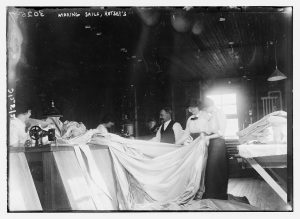 Opened it’s loft on City Island, New York, in 1902, thus becoming the largest sailmaker in the world, employing over 180 sail makers across it’s sites. This enabled them to make sails for both the US and UK Americas Cup entries, and so developed a competitive yet amicable rivalry between their lofts.
Opened it’s loft on City Island, New York, in 1902, thus becoming the largest sailmaker in the world, employing over 180 sail makers across it’s sites. This enabled them to make sails for both the US and UK Americas Cup entries, and so developed a competitive yet amicable rivalry between their lofts.
Culminating in the controversial 1958 competition where R&L supplied both the US entrant Columbia, suited by the City Island Loft (they won) and the British entrant (Sceptre) via the UK loft.
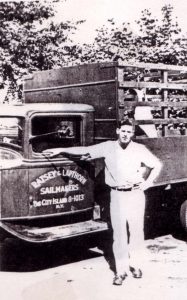 In 1795, Lord Collingwood of the British Admiralty was a strong advocate of what he saw as the stiffer and better sails coming out of Ratsey’s loft.This led to providing some of the sails for HMS Victory that Lord Nelson used in the battle of Trafalgar in 1805; the topsail remains in the British museum complete with cannon ball holes.
In 1795, Lord Collingwood of the British Admiralty was a strong advocate of what he saw as the stiffer and better sails coming out of Ratsey’s loft.This led to providing some of the sails for HMS Victory that Lord Nelson used in the battle of Trafalgar in 1805; the topsail remains in the British museum complete with cannon ball holes.
In 1815 George Ratsey was one of the founders of the Royal Yacht Squadron in Cowes. The RYS was the founder of the”Hundred Guineas Cup” which became “Auld Jug”- Americas Cup, after the American challenger beat the RYS in 1851.The Americas Cup is the oldest sporting trophy in the world.
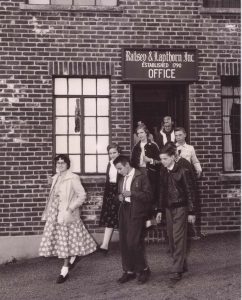 With corners on the markets for the best cottons, and the introduction of new manufacturing techniques using heat, pressure and chemicals, the Ratsey’s dynasty was always founded on innovation through science and materials that made faster yachts.
With corners on the markets for the best cottons, and the introduction of new manufacturing techniques using heat, pressure and chemicals, the Ratsey’s dynasty was always founded on innovation through science and materials that made faster yachts.
As part of the war effort, Ratsey’s not only manufactured tank covers for the US Cadillac made tanks, but also developed a wooden ‘life boat’ designed to be dropped from the undercarriage of a plane to downed US airmen.
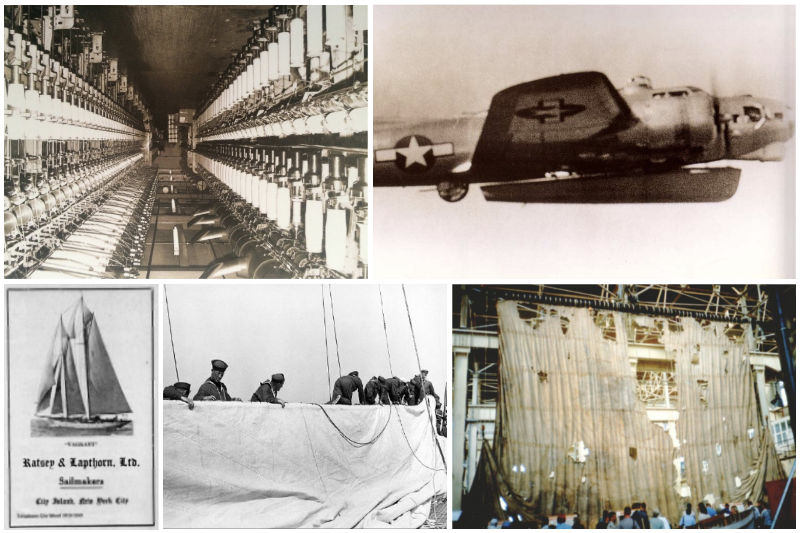
TIMELINE
1790 George Rogers Ratsey establishes Ratsey Sailmakers in Cowes.
C1800 George Rogers Ratsey builds sails for HMS Victory. A fore top sail remains in the Naval museum in Portsmouth.
1825 James Lapthorn establishes his loft in Gosport
1870 Lapthorn Sailmakers builds sails for the British America’s Cup challenger Cambria
1871 Ratsey Sailmakers builds sails for the British America’s Cup challenger Livonia
1885 The British America’s Cup challenger Genestra carries Lapthorn Sails
1886 The British America’s Cup challenger Galatea carries Lapthorn Sails
1887 The British America’s Cup Challenger Thistle carries all Ratsey Sails
1889 The firms of Ratsey from Cowes and Lapthorn from Gosport merge to become Ratsey and Lapthorn Ltd
1893 The British America’s Cup Challenger Valkyre 2 carries all Ratsey and Lapthorn Sails
1895 The British America’s Cup Challenger Valkyre 3 carries all Ratsey and Lapthorn Sails
1899 The British America’s Cup Challenger Shamrock 1 carries all Ratsey and Lapthorn Sails
1901 The British America’s Cup Challenger Shamrock 2 carries all Ratsey and Lapthorn Sails
1902 Recognising their significant competitive edge and an opportunity to dominate Americas Cup sailing and , Thomas Ratsey establishes a yard at City Island, New York
1902 J.P. Morgan, a supporter and early advocate of Ratsey and Lapthorn commissions the New York Loft to make the sails for his private yacht Corsair
1902 The new Loft in New York is immediately commissioned to make the sails for the American America’s Cup entrant and winner Columbia
1903 Ratsey and Lapthorn New York build sails for the next Americas Cup defender Reliance, the same year the British loft equips it’s challenger Shamrock 3 with Ratsey and Lapthorn sails.
1917 After 15 successful years in New York, George Ratsey opens the new loft on City Island; 3 floors, each over 150’ long and the largest sail loft in the world.
1930 James Lapthorn develops a new strand of cotton from Sudan, weighing in at 29.03 oz it was the heaviest cloth yet used in sailmaking and despite its exorbitant price was used for Enterprise, the U.S defender of the America’s Cup and for Migrant, at 220’ long the largest schooner in the world.
1934 The New York loft builds sails for the U.S. Cup defender Rainbow whilst the Gosport loft equips Endeavor 1, the British entrant
1937 Ratsey and Lapthorn are again the choice on both sides of the pond, The New York loft building sails for the Cup defender and ‘Super J’ Ranger whilst the UK loft equips Endeavor 2, the British entrant with George Ratsey amongst the crew.
1942 As part of the ear effort, R&L equip the U.S forces with custom canvas orders including tank covers plus in conjunction with Luders shipyard, develop a rescue boat for downed airmen that attached and deployed from the undercarriage of a plane.
1958 The New York loft builds 27 sails for the Cup Columbia whilst the UK loft equips Sceptre, the British entrant. Colin Ratsey sails on board the American boat whilst George Ratsey crews for the British.
1982 After the demise of the great sailing yachts and the introduction of modern synthetic fabrics, Ratsey and Lapthorn announces the closure of the New York loft.
1982 – present day Sailmaking continues in Cowes under the guidance and stewardship of Andy Cassell.
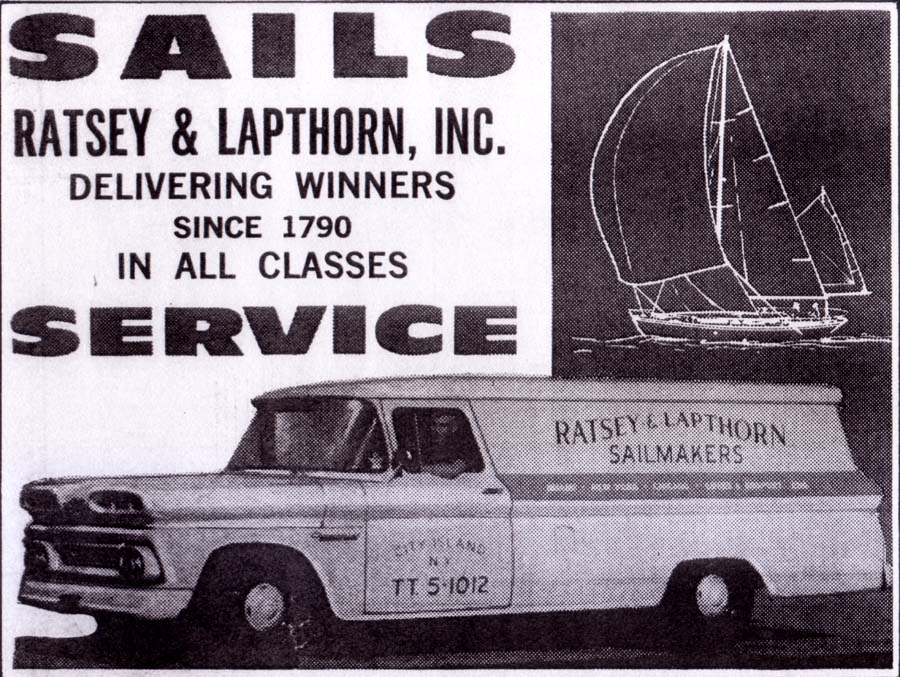
WORLD RENOWNED SAILMAKERS
SINCE 1790
WORLD RENOWNED SAILMAKERS
SINCE 1790

